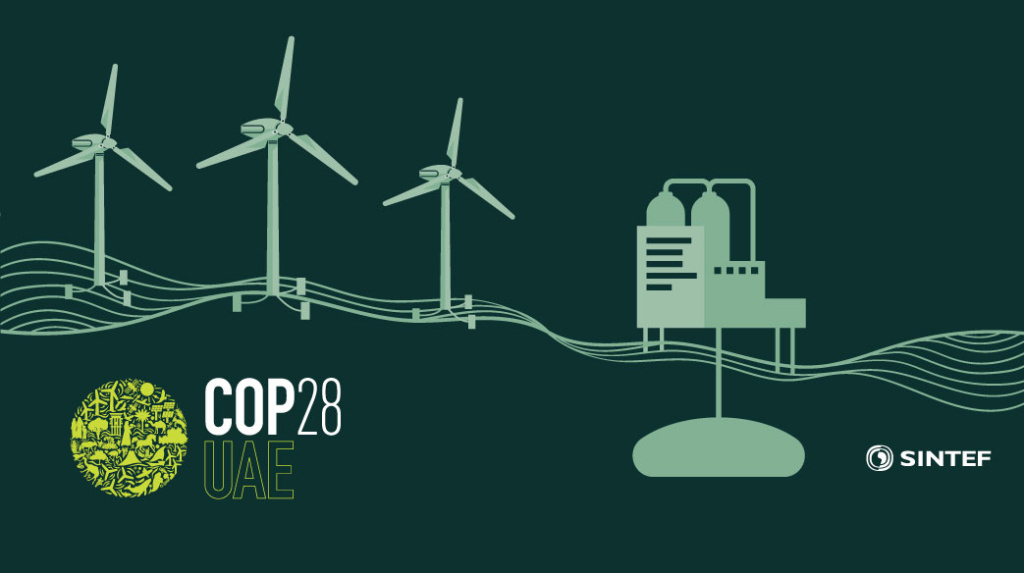This blog discusses the significance of carbon capture, transport and storage (CCS) as a crucial technological solution for reducing CO2 emissions and achieving the climate goals outlined in the Paris Agreement. It explores the role of CCS technology in the energy transition, particularly for industrial sectors, such as cement and metal production, and emphasises the need for standards and infrastructure for the large-scale transport and storage of CO2.
Furthermore, the blog highlights Norway’s leading role in CCS, with projects like Longship and Northern Lights, and underscores the importance of CCS for the production of clean hydrogen. Lastly, it provides recommendations for integrating CCS as an essential component of the 2050 net-zero emissions goal, addressing issues related to phasing out fossil fuels and the responsibility for storage in countries with high CO2 exports.
COP28 recommendations for CCS
- CCS technologies are crucial for achieving net-zero emissions by 2050, complementing other sustainable solutions rather than replacing them.
- If COP28 supports the phasing out unabated fossil fuels, specific criteria for rapid abatement and the level of cleansing required to earn the definition of “clean” or “unabated” should be specified, using the best available technology as a baseline. Additionally, fossil input factors and other fossil materials contributing to emissions should be addressed, not just fossil fuels.
- Countries with high exported CO2 emissions should provide storage capacity comparable to their exported emissions. Oil-producing countries have geological storage potential and expertise by virtue of being oil producers. This is an extension of the EU’s “take back” obligation in their Net-Zero Industry Act, which requires oil and gas producers within the EU to provide storage capacity of 50 MT CO2/year, based on their production share in the EU over the last 4 years.

The problem
CCS involves a range of technologies and processes that enable the capture of CO2 and its permanent storage in geological formations, thereby significantly reducing CO2 emissions.
Hundreds of climate scenarios modelled by the Intergovernmental Panel on Climate Change (IPCC) emphasise the crucial role of CCS in nearly all predictive scenarios that demonstrate the successful achievement of the climate goals outlined in the Paris Agreement.
When discussing the role of CCS in energy transition and the green shift, it must be evaluated in relation to the emissions that cannot be feasibly reduced by 2050 through energy efficiency, electrification, hydrogen, or increased renewable energy generation. CCS stands out as the only technology capable of decarbonising industries such as cement and waste-to-energy, which are challenging but necessary to decarbonise if we are to achieve net-zero emissions by 2050.
CCS is also an indispensable solution for producing clean hydrogen from natural gas, known as blue hydrogen or low-carbon hydrogen. CCS technologies provide the foundation needed to support CO2 capture solutions from bio-based processes, direct air capture (DAC), or water.
CCS is a mature technology, currently capturing 42.5 million tons of CO2 annually for geological storage or utilisation. However, there is a significant discrepancy that undermines the reputation of this solution. For example, Norway captures and stores about 1.6 million tons of CO2 per year via Sleipner and Snøhvit, while emissions from the use of exported gas are approximately 250 million tons CO2 per year.
To make CCS a solution for mitigating climate change, infrastructure for the transport and storage of large quantities of CO2 at a scale of several gigatons per year globally by 2050 must be developed. This requires the establishment of standards and predictability to enable CO2 to flow in a network between different operators and across borders. Politicians need to strike the best possible balance between regulation and free market forces.
The solution
Successful implementation of CCS requires deep industry engagement in research projects developing practical solutions. New business models must be developed to ensure rapid implementation. Solving the climate crisis requires contributions from both public and private capital.
In principle, CCS can capture nearly 100% of CO2 emissions from the use of fossil materials, whether from burning fuels like coal or oil, or other processes that release CO2, such as limestone calcification. The technical-economic optimum typically ranges from 90-97%, and higher quota prices (e.g., in EU-ETS) will drive up capture rates. It’s essential to consider the entire value chain in such considerations, not only for these processes but also for processes in renewable energy, where the CO2 intensity in the power mix plays a significant role. To balance the remaining CO2 emissions from process plants, CCS can be applied to processes using biomass, such as biogas, marine biomass, agricultural waste, or household waste in order to achieve negative emissions.
Permanent, large-scale CO2 storage is a necessary part of a cost-effective transition to a hydrogen society. It is crucial that storage sites are well-mapped and monitored during and after operation, with effective measures in place for worst-case scenarios.
As part of Longship, the Northern Lights project aims to transport and store up to 1.5 million tons of CO2 emissions from various facilities, including a mainland cement factory. The gas will be liquefied and transported from the factory via ship to a land terminal for intermediate storage and further transport to the offshore storage site. From there, the gas will be transported through a pipeline approximately 100 km from the shore and injected into a permanent storage site nearly 2,700 meters below sea level.
Northern Lights will become Europe’s first CO2 storage hub, aiming to store 5 million tons or more of CO2 under the seabed each year in the next phase, with the potential to store even more CO2 in nearby geological formations. Several companies have expressed interest in this, and permits have been granted to industrial players for further reservoir exploration and utilisation on the Norwegian continental shelf for CO2 injection and storage.
EU taxonomy provides a broad overview of future economic activities, while Longship serves as a template for how partnerships between public and private entities can function to bridge the gap between pilot projects and full-scale implementation. Public investments at this stage will enable businesses to join the CCS transition earlier than they otherwise could, reducing the overall cost in the long run.
CCS is a key component of blue hydrogen production. Hydrogen4EU studies have concluded that “unprecedented changes” are required to achieve net-zero emissions by 2050. We must develop a hydrogen market that enables hydrogen trade based on all available production methods, including natural gas, as well as large-scale electrification of society, with much of the electricity production coming from solar and wind, including offshore wind. Large-scale CO2 storage (e.g., under the seabed in the North Sea) can kickstart the hydrogen infrastructure we need for a renewable future.
The most significant risk of not adopting CCS is the continued release of billions of tons of CO2 into the atmosphere from human activities. It is high time to realise facilities to achieve a balance between actions taken and commitments made over time.









Comments
No comments yet. Be the first to comment!